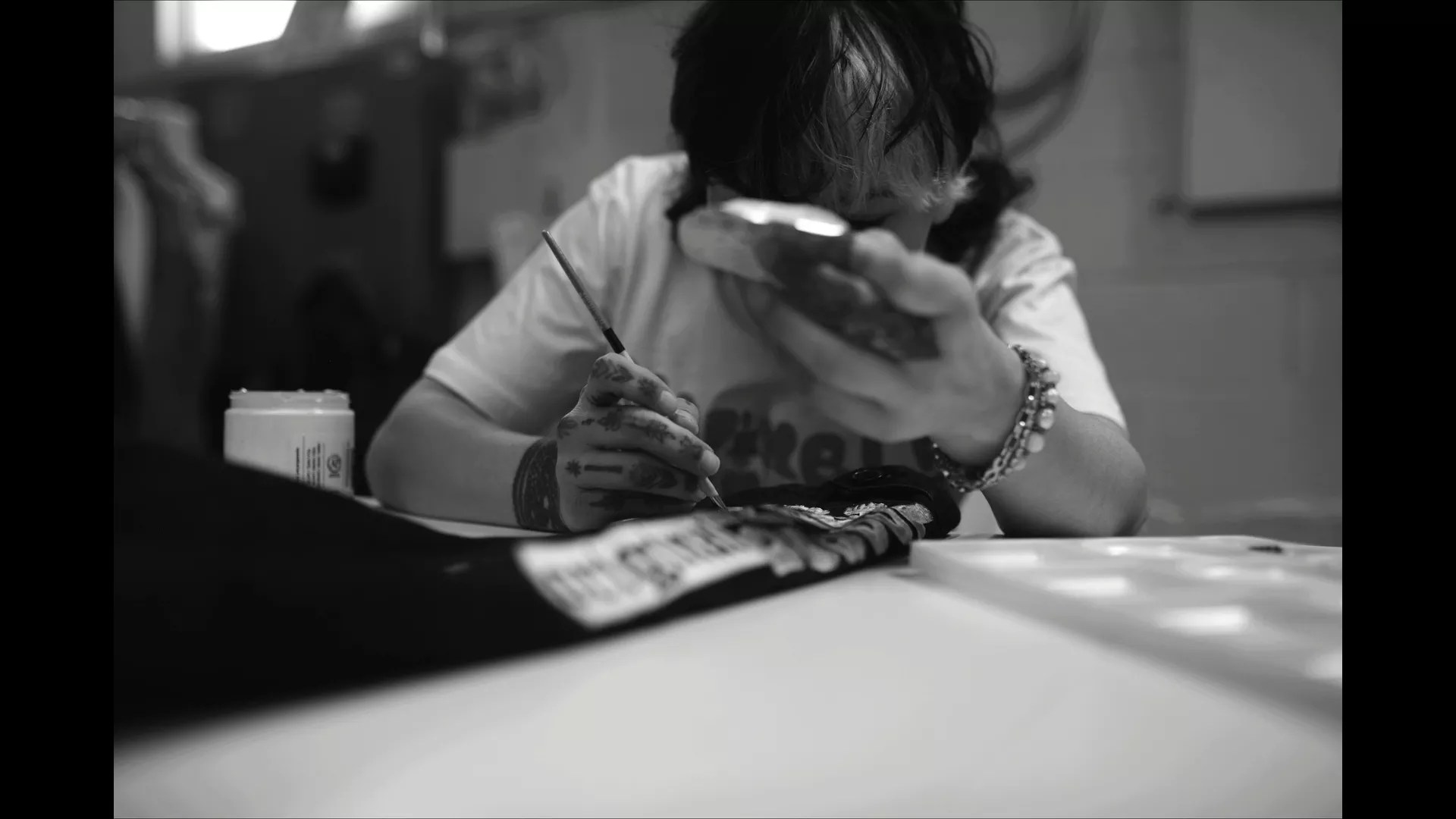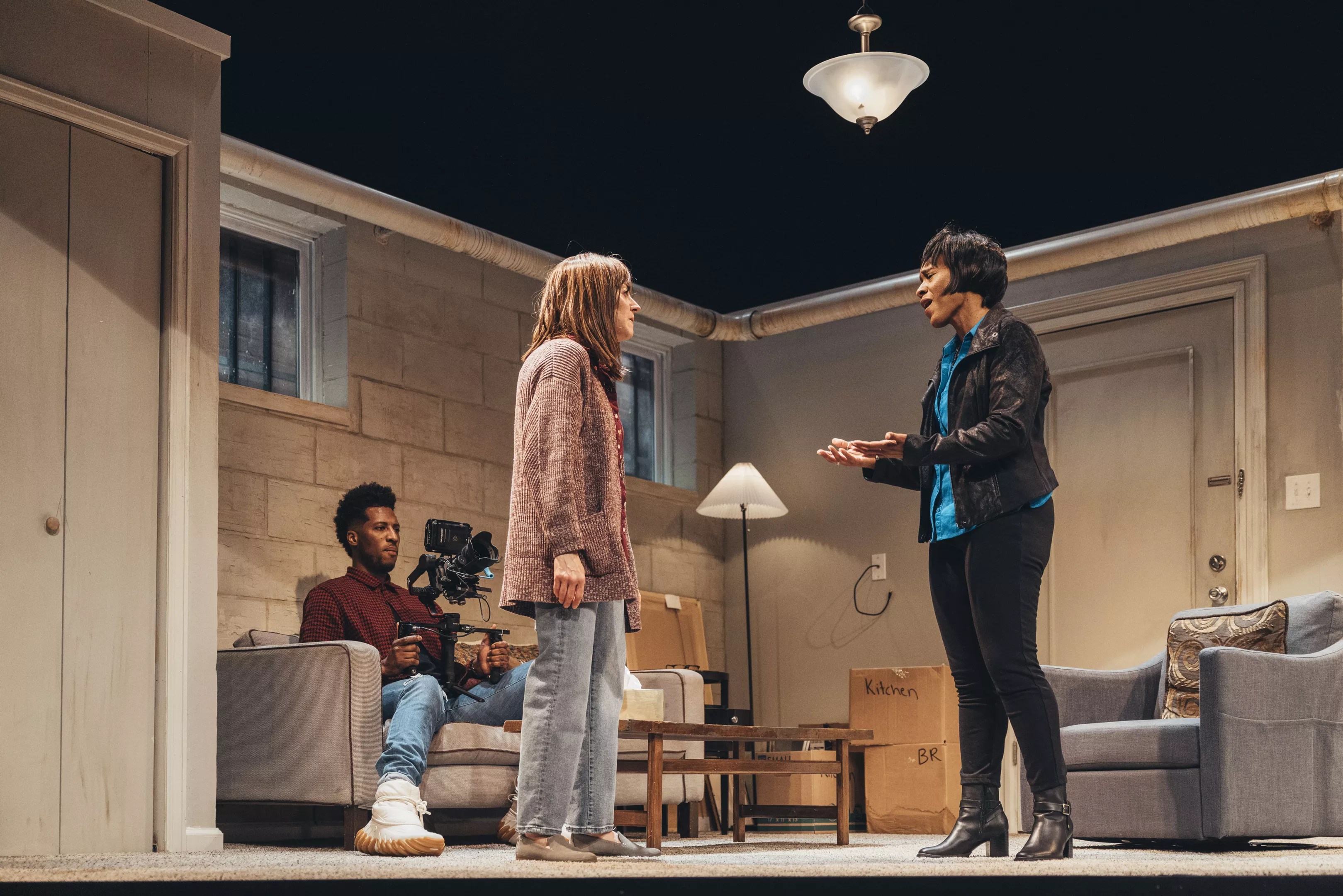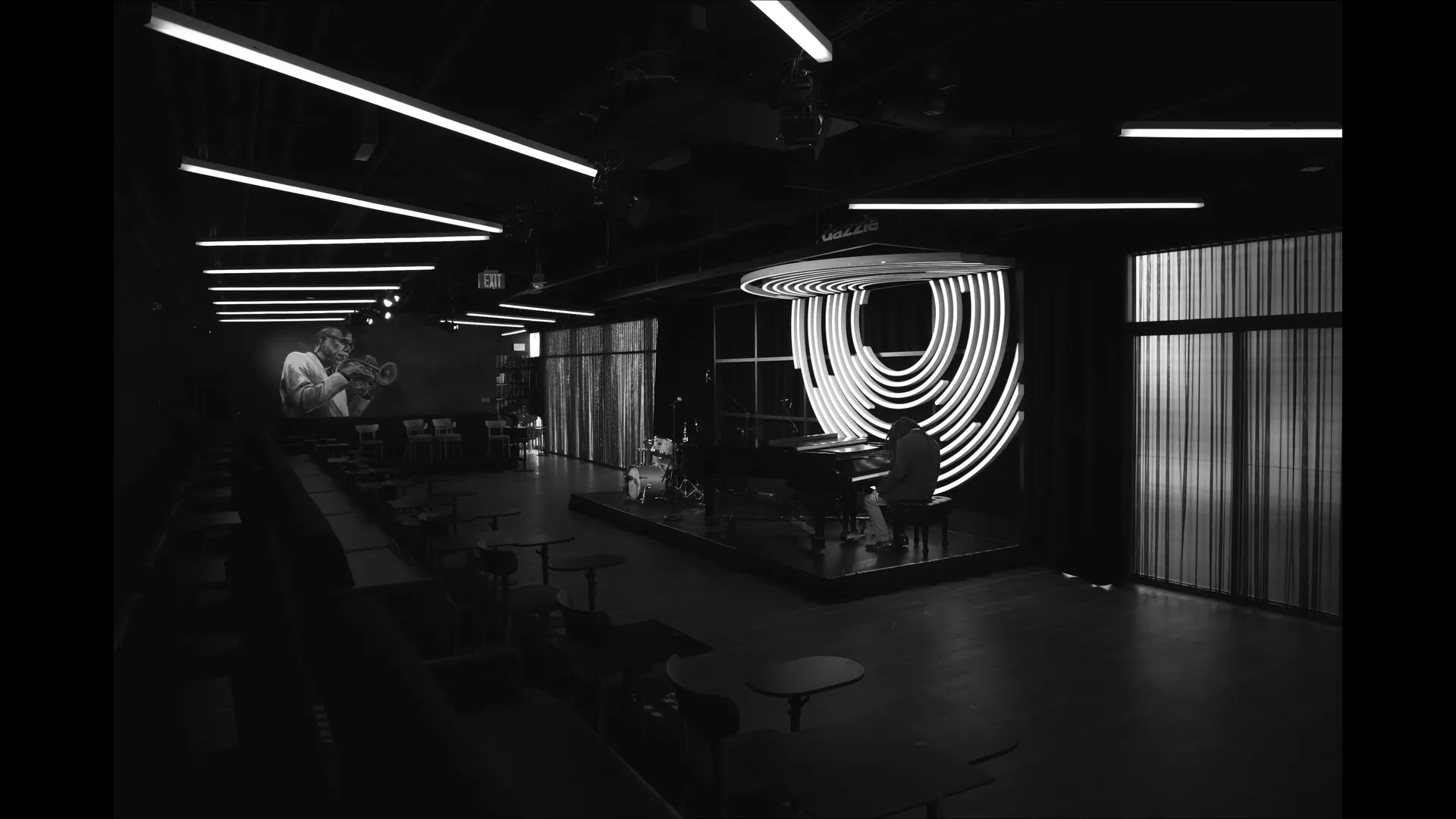
Courtesy of Leland Schmidt

Audio By Carbonatix
What does it take to create when the world – and your own mind – is telling you to stop? Denver filmmaker Anthony Grimes addresses this question in Long Live the Art, a new short film that pits artists against the shadowy “Voice of Doubt.” It was released digitally today, December 4.
“I’m passionate about elevating art because it does so much for us beyond entertainment,” Grimes says. “It’s essential to mental health, how people experience their community and creating a sense of belonging. It also has a huge economic impact that rivals industries like agriculture. We’d like this video to contribute to that conversation. It’s not just art for entertainment that’s important. The arts serve an important economic and community purpose.”

“We envision a world in ten years where the arts are given their due in the city alongside other forms of entertainment such as sports, and as a result, the artists are more visible and present throughout Denver,” says director and writer Anthony Grimes.
Courtesy of Brien Hollowell
In just under four minutes, Grimes weaves a rich narrative that honors local artists’ resilience. Grimes calls the film “a snapshot of the richness of Denver’s artistic community,” but Long Live the Art is more than a snapshot; it’s a battle cry. Set against a backdrop of artificial intelligence, funding cuts and creative disruption, this film celebrates the courage to create.
“Even though it’s sometimes daunting to create, it’s sometimes necessary to change the world,” Grimes explains. “AI is threatening to displace traditional art, and artists are having to deal with what that means for their careers and future. Part of the goal of Long Live the Art is to demonstrate that these human creators are essential to the act of creation and are able to do beautiful things in Denver despite all odds. The film captures a snapshot of the current arts scene in Denver, but I also see it as a rallying cry about the necessity of art.”

“The film captures a snapshot of the current arts scene in Denver, but I also see it as a rallying cry about the necessity of art,” says the project’s director and writer, Anthony Grimes.
Courtesy of Leland Schmidt
The project began in Grimes’s basement, where he wrote the initial script as a personal poem. It eventually transformed into a collaborative venture that brought together some of Denver’s most celebrated artists, such as Fresh Sam, James Holmes and Triiip.
“This project came together through the relationships I have in the community as an artist,” Grimes says. “When it came down to casting, it was about what art we wanted to feature that dictated where we shot and who we filmed.”
Filming took place across ten iconic Denver locations, with spaces such as Dazzle generously contributing their venues. “Since we are featuring piano, it was natural to do it in Dazzle, a historical jazz club in Denver,” Grimes says. “They were great and gave it to us free of charge because they were interested in supporting the project, which was invaluable.”
At its core, Long Live the Art dramatizes the universal battle artists face: the struggle against doubt. The film begins with the Voice of Doubt, portrayed by Theo Wilson, who delivers scathing taunts designed to paralyze creativity. “Never again will you create anything; your paintbrush will forever be dry,” Doubt sneers in the film’s opening lines.

“The film highlights the beauty of creating dance, playing the piano, painting, rapping, performing theater and other art forms in spots around the city,” says director and writer Anthony Grimes.
Courtesy of Victor of Valencia
According to Grimes, Doubt is meant to represent the difficulties that artists face, whether internal or external, when attempting to create. “Doubt might come from outside forces; it could be background, racism or classism – whatever it is, there always seems to be this voice that tells you that you can’t – that’s doubt. From there, the film highlights the beauty of creating dance, playing the piano, painting, rapping, performing theater and other art forms in spots around the city.”
The film’s black-and-white cinematography and classic 4:3 aspect ratio intensify the tension – a deliberate choice by Grimes. “You normally wouldn’t associate art with black and white,” he noted. “But it’s meant to slow down those who watch and give it a classic feel. We are hoping that, because of how it is filmed and the profile of the artists, Denver will look back at this as a significant piece of the city’s art history.”

Filming took place across ten iconic Denver locations, with spaces like Dazzle Denver generously contributing their venues.
Courtesy of Leland Schmidt
The production of Long Live the Art was made possible through a partnership between the Bonfils-Stanton Foundation and 99thstate, two organizations committed to elevating art as a critical pillar of society. Now available on YouTube and Bonfils-Stanton’s social media channels, the film serves as the centerpiece of a larger campaign designed to spark dialogue and inspire action.
And the campaign doesn’t stop with the film. Grimes and his collaborators plan to host panel discussions addressing the challenges and opportunities facing artists today. Additionally, they aim to stage live art activations featuring the film’s artists and other creators across Denver, allowing audiences to experience the transformative power of art in real time.
“Our campaign is to elevate the history and presence of arts and culture throughout the city,” Grimes says. “We envision a world in ten years where the arts are given their due in the city alongside other forms of entertainment such as sports, and as a result, the artists are more visible and present throughout Denver.”
Learn more at bonfils-stantonfoundation.org and check out the video on YouTube.